Tool/software:
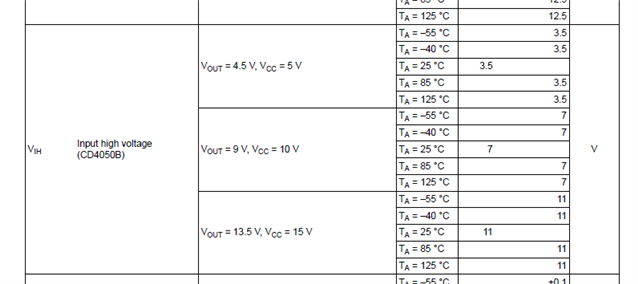
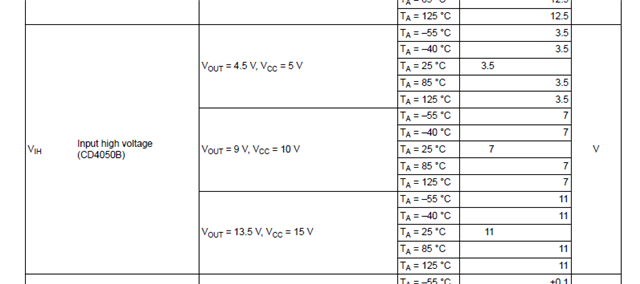
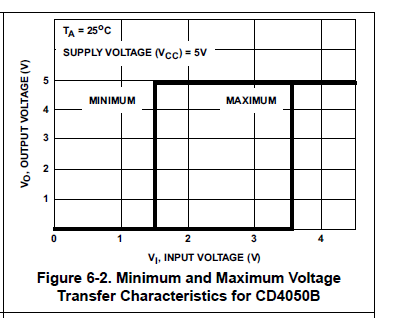
在4050B规格书中的第8页和第10页分别看到以上两个图,当vcc是5V(我实际是4.6V)时,输入的高电平必须大于3.5V吗?为什么只有在25°C最小是3.5V,反而在高温(85°C)和低温时(-40°C),最大是3.5V呢?
This thread has been locked.
If you have a related question, please click the "Ask a related question" button in the top right corner. The newly created question will be automatically linked to this question.
Tool/software:



在4050B规格书中的第8页和第10页分别看到以上两个图,当vcc是5V(我实际是4.6V)时,输入的高电平必须大于3.5V吗?为什么只有在25°C最小是3.5V,反而在高温(85°C)和低温时(-40°C),最大是3.5V呢?
Hi,
All of these values should be in the "min".
Please refer to this picture below from an older revision of the document.
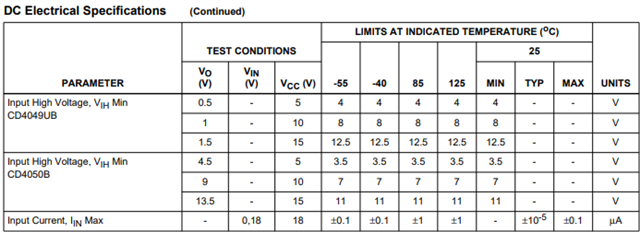
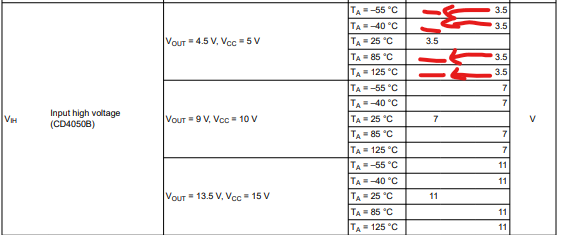
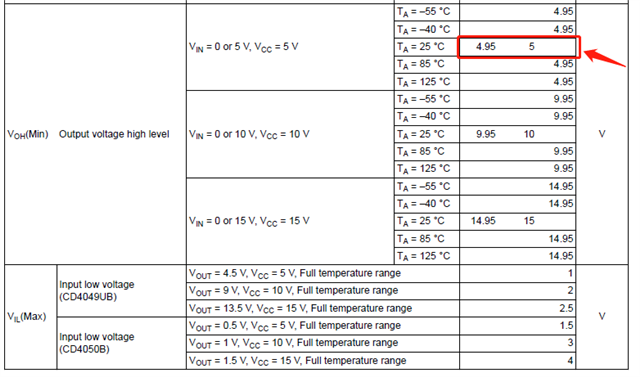
图一
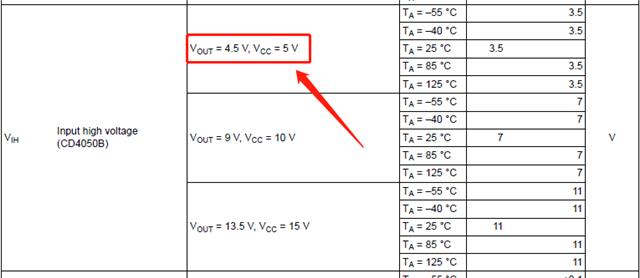
图二
Hi 伟业,你好
我从规格书中看到,上面第一张图片当VCC为5V时,VOUT的高电平最小为4.95V,因为此时的VOUT电平就是VCC经过一个MOS管的压降,
上面第二张图片当VCC为5V时,VOUT为4.5V,这个和第一张图片的Vout电平是不是相矛盾?请帮忙解答
Hi,
This middle column is for test conditions where the voltages are forced to the values.
In the first picture, VOH = 4.95 is the min with that specific Vin.
In the second picture, testing conditions are forced to Vout = 4.5, however, there is no mention of Vin.

Hi,
You cannot leave inputs floating, but outputs can be floating.
You can connect inputs to Vcc or GND, it does not matter.
Please refer to FAQ here: [FAQ] How does a slow or floating input affect a CMOS device?